Sweet flag, scientifically known as Acorus calamus, is a perennial grass from the Acoraceae family, native to Europe. This versatile plant typically reaches a height of 61 to 91 cm and spreads 46 to 61 cm wide, forming a dense ground cover through slow-spreading rhizomes.
Ideal for gardens with full sun or partial shade, sweet flag is prized for its non-invasive growth habit and sweetly fragrant foliage. During late spring, it produces small, yellow-green flowers, which are followed by tiny red berries that mature in the fall.
With its unique characteristics, sweet flag can add both texture and fragrance to a variety of garden settings.
| Common name | Sweet Flag |
| Botanical name | Acorus calamus |
| Family | Acoraceae |
| Species | calamus |
| Origin | Europe |
| Plant type | Herbaceous Perennial |
| Hardiness zone | 4, 5, 6, 7, 8, 9, 10 |
| Sunlight | Full Sun |
| Maintenance | Low |
| Drainage | Poorly Drained |
| Spacing | Less than 12 in. |
| Flowering period | Spring |
| Height | 2 ft. – 2 ft. 6 in. |
| Flower color | Green |
| Leaf color | Green |
| Fruit type | Berry |
| Leaf benefit | Fragrant |
| Garden style | Rain Garden |
| Uses | Container |
I. Appearance and Characteristics
Acorus calamus (also called sweet flag, sway or muskrat root, among many other common names) is a species of flowering plant with psychoactive chemicals. It is a tall wetland monocot of the family Acoraceae, in the genus Acorus. Although used in traditional medicine over centuries to treat digestive disorders and pain, there is no clinical evidence for its safety or efficacy – and ingested calamus may be toxic – leading to its commercial ban in the United States.
Sweet flag is a herbaceous perennial, 2 m (79 in) tall. Its leaves resemble those of the iris family. Sweet flag consists of tufts of basal leaves that rise from a spreading rhizome. The leaves are erect yellowish-brown, radical, with pink sheathing at their bases, sword-shaped, flat and narrow, tapering into a long, acute point, and have parallel veins.
The leaves have smooth edges, which can be wavy or crimped. The sweet flag can be distinguished from iris and other similar plants by the crimped edges of the leaves, the fragrant odor it emits when crushed, and the presence of a spadix.
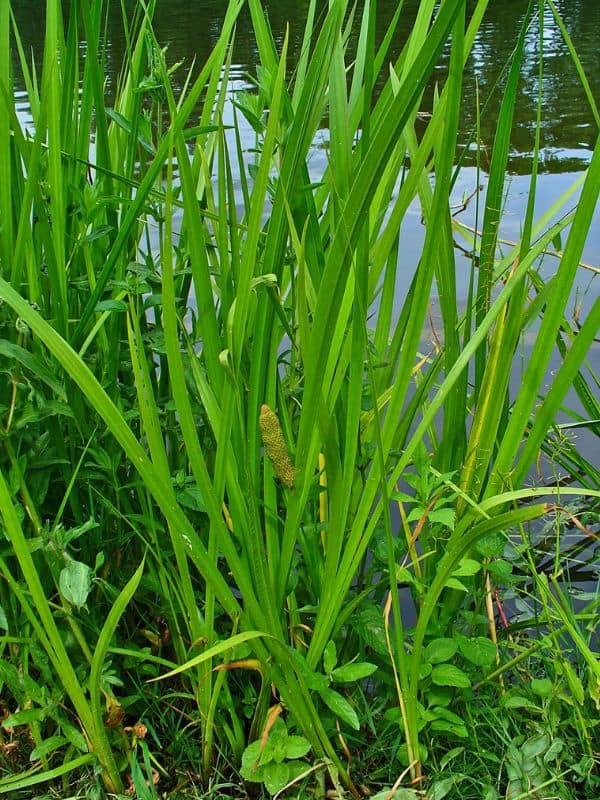
Only plants that grow in water bear flowers. The solid, triangular flower-stems rise from the axils of the outer leaves. A semi-erect spadix emerges from one side of the flower stem. The spadix is solid, cylindrical, tapers at each end, and is 5 to 10 cm in length. A covering spathe, as is usual with Araceae, is absent. The spadix is densely crowded with tiny greenish-yellow flowers.
Each flower contains six petals and stamens enclosed in a perianth with six divisions, surrounding a three-celled, oblong ovary with a sessile stigma. The flowers are sweetly fragrant. In Europe, it flowers for about a month in late spring or early summer, but does not bear fruit. The fruit is a berry filled with mucus, which when ripe falls into the water and disperses by floating. In Asia, it also fruits sparingly, and propagates itself mainly by growth of its rhizome, forming colonies.
The branched, cylindrical, knobby rhizome is the thickness of a human finger and has numerous coarse fibrous roots below it. The exterior is brown and the interior white.
History
The plant was already mentioned in the Chester Beatty papyrus VI dating to approximately 1300 BC. The ancient Egyptians rarely mentioned the plant in medicinal contexts, but it was certainly used to make perfumes.
Initially, Europeans confused the identity and medicinal uses of the Acorus calamus of the Romans and Greeks with their native Iris pseudacorus. Thus the Herbarius zu Teutsch, published at Mainz in 1485, describes and includes a woodcut of this iris under the name Acorus.
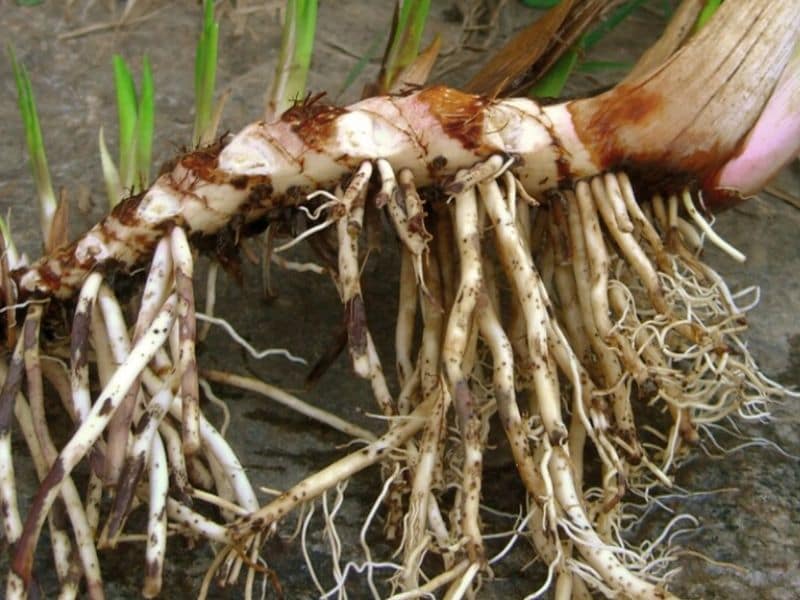
This German book is one of three possible sources for the French Le Grant Herbier, written in 1486, 1488, 1498 or 1508, of which an English translation was published as the Grete Herball by Peter Treveris in 1526, all containing the false identification of the Herbarius zu Teutsch. William Turner, writing in 1538, describes ‘acorum’ as “gladon or a flag, a yelowe floure delyce”.
The plant was introduced to Britain in the late 16th century. By at least 1596, true Acorus calamus was grown in Britain, as it is listed in The Catalogue, a list of plants John Gerard grew in his garden at Holborn. Gerard notes “It prospereth exceeding well in my garden, but as yet beareth neither flowers nor stalke”. Gerard lists the Latin name as Acorus verus, but it is evident there was still doubt about its veracity: in his 1597 herbal he lists the English common name as ‘bastard calamus’. Carl O. Sauer reported the tuber to have been used by North American Indians at the time of European discovery.
Toxicity
Although calamus has been used for its fragrance and ingested, it has not been studied by rigorous clinical research. Individual medical reports of toxicity mention severe nausea and prolonged vomiting over many hours following oral uses. Laboratory studies of its extracts indicate other forms of toxicity, due mainly to the emetic compound β-asarone.
II. How to Grow and Care
Sunlight
Sweet flag thrives best in full sun conditions, requiring abundant light for optimal growth and development. Exposure to direct sunlight fosters robust health and vitality in the plant. However, sweet flag displays resilience and can tolerate partial sun, affording it versatility in various environments. Inadequate light may lead to stunted growth or diminished vigor.
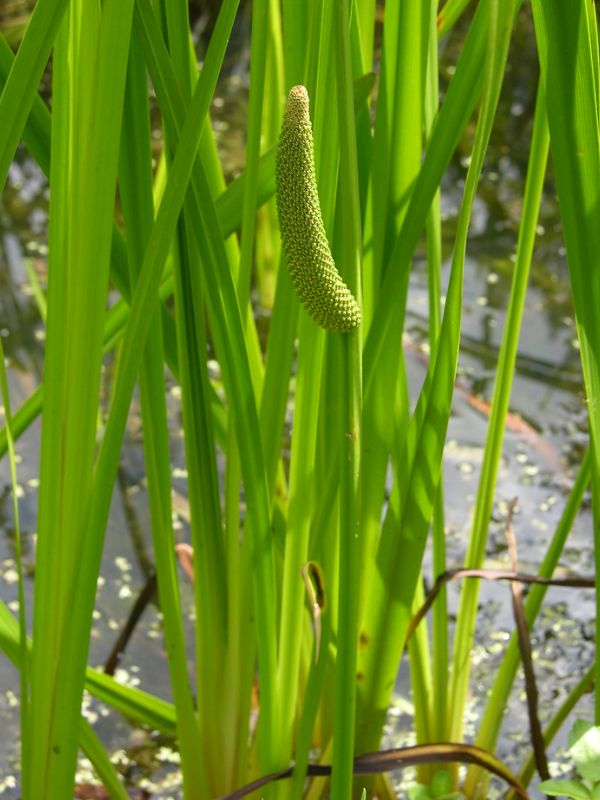
Outdoors, sweet flag should be situated in a location that receives ample sunlight throughout the day. Sweet flag has the capability to adapt its foliage to manage different light levels, although the specifics of these adaptations are not well-documented. Placement in the landscape should ensure that the sweet flag receives the light it needs without significant obstruction.
Watering
Sweet flag thrives in wet conditions, reflecting its natural habitat near water bodies. It prefers consistent moisture and is highly tolerant to waterlogged conditions. The plant requires frequent watering, ideally every day. Being a deciduous plant, sweet flag’s water needs decrease during dormancy but it still appreciates moist soil throughout the year.
Transplanting
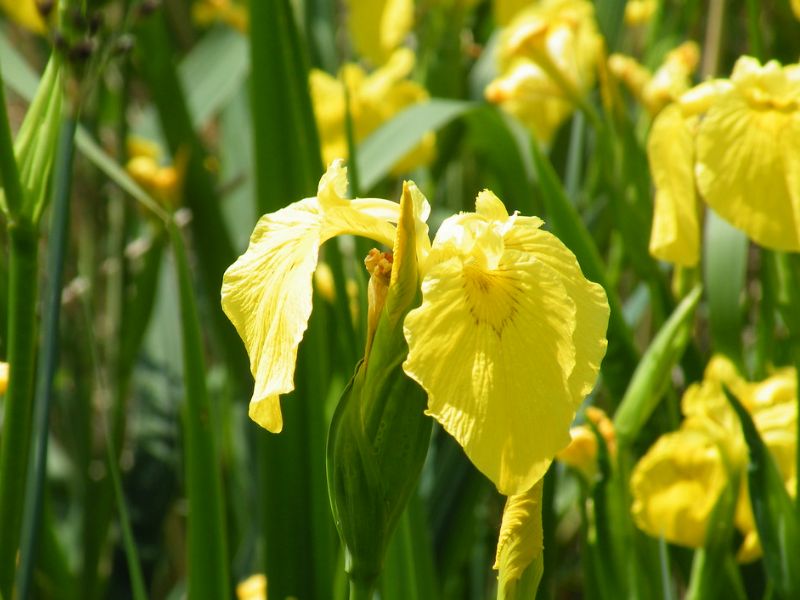
The most appropriate period to transplant a sweet flag is the interval between late winter to early spring (S2-S4), with this season offering ideal growth stimulation. The plant thrives best in wet locations with full or partial sun exposure. Remember, sweet flag doesn’t tolerate drought and needs a moist environment to flourish.
III. Uses and Benefits
- Ornamental uses
The tall, clumping grasses of the sweet flag can decorate garden borders or the edge of water features, especially when grown in a mass. Its requirement for wet soil makes it perfect for rain gardens and water gardens. The foliage provides showy interest for much of the year when planted as an accent with other plants or as a specimen.
- Medicinal uses
Sweet flag has a long history of use in Chinese, Nepal and Indian herbal traditions. Sweet flag was and is used as an herbal medicine by the Chipewyan people.
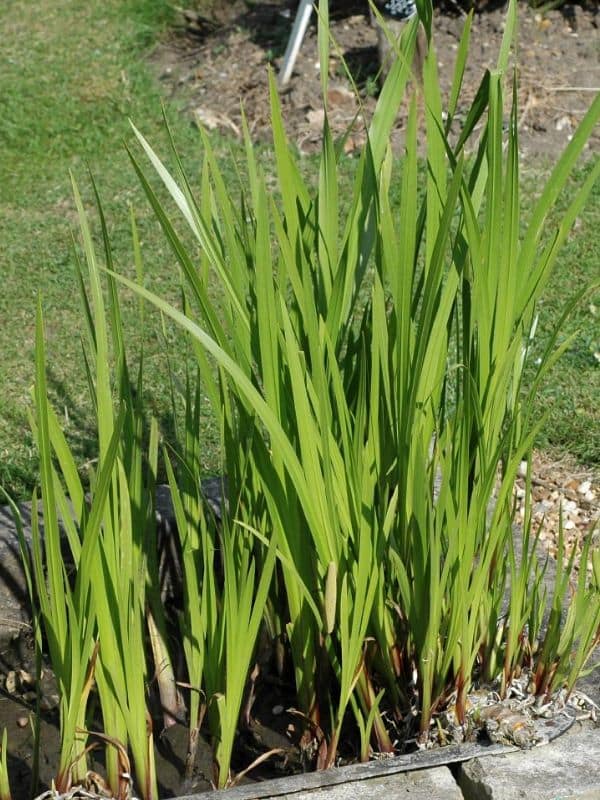
- Culinary uses
The young stalks can be pulled when under 30 cm (12 in); the inner stems can be eaten raw. The roots can be washed, peeled, cut into small pieces, boiled, and simmered in syrup to make candy.
- Insecticide
The dried and pulverized roots contain a compound which is useful as an insecticide.
Find Where to Buy the Best Sweet Flag (Acorus calamus)




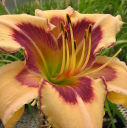


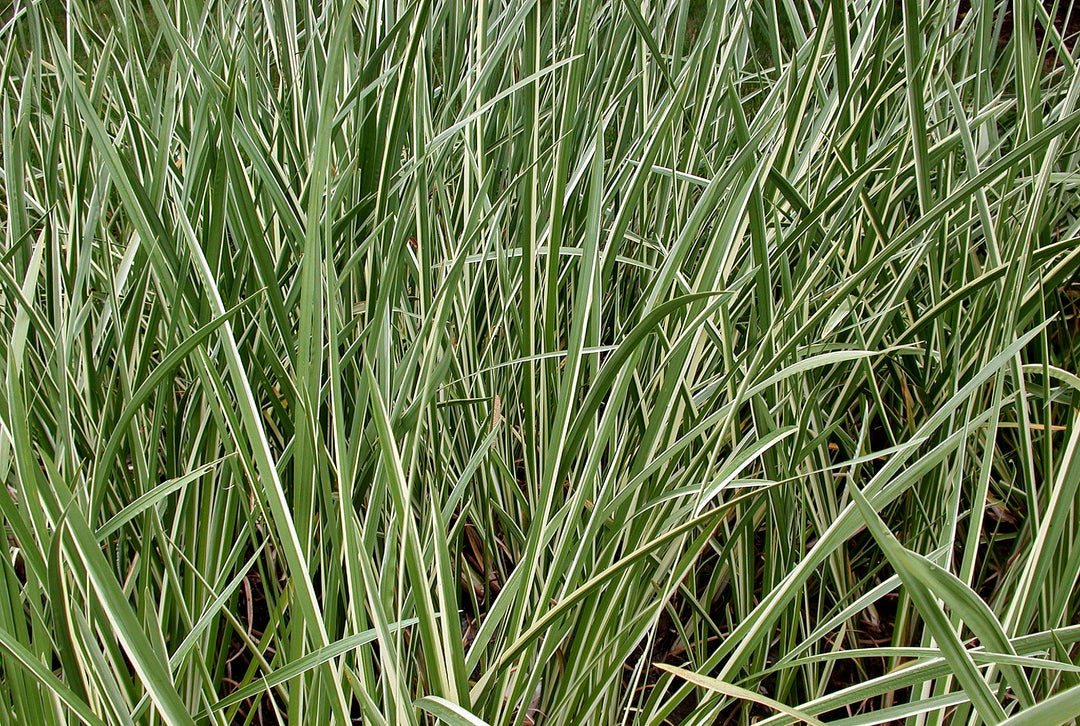










Leave a Reply